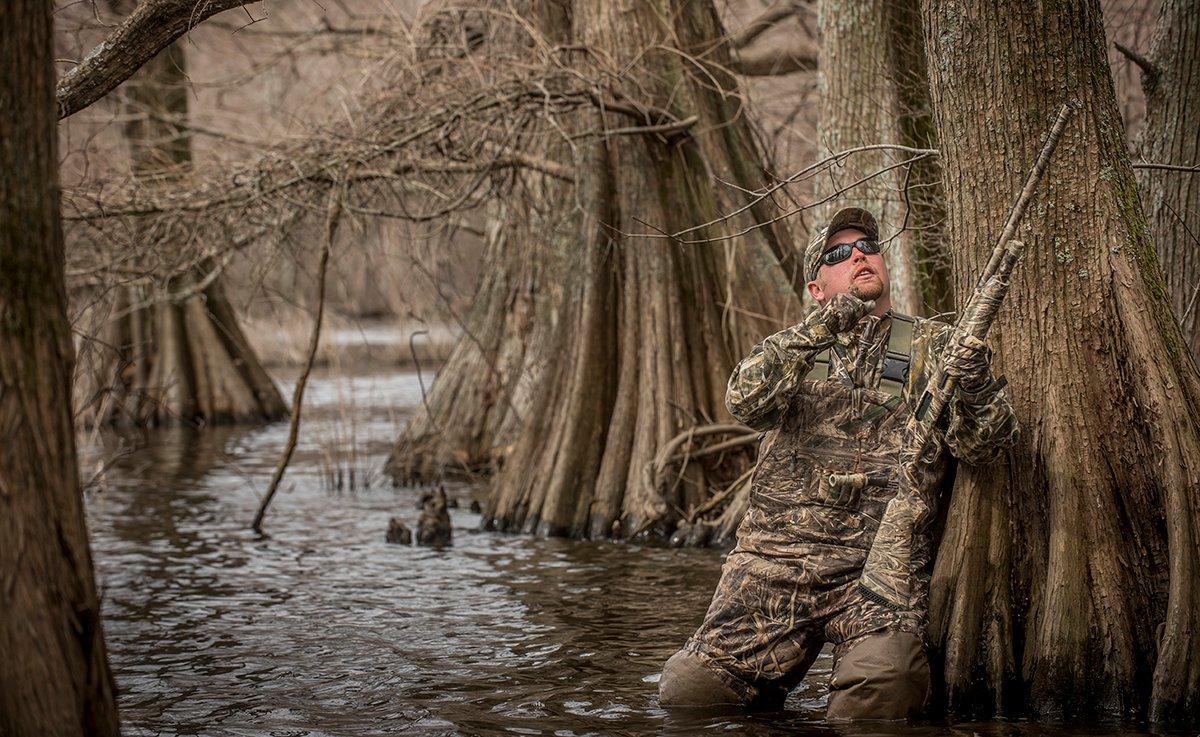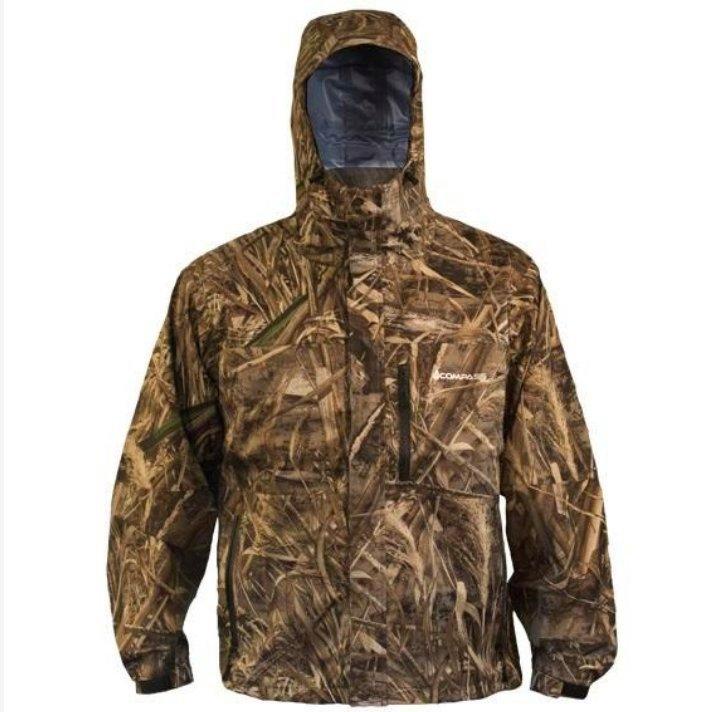This Arkansas destination has earned the title the Duck Capital of the World
They come from the North: Saskatchewan, Manitoba, Ontario, Quebec, the Dakotas, the Lake States and elsewhere. Blue-winged teal first, and then gadwalls, wigeon, pintails and greenwings. Finally mallards.
Flight lanes narrow as they come. Smaller migration routes merge and then merge again. The overall pattern resembles a giant tree, its uppermost branches in the boreal forests of Canada and its roots in the Gulf of Mexico. Along the trunk, where the three largest branches collide, lies the Grand Prairie of Arkansas, near the confluence of the White, the Arkansas and the mighty Mississippi.
That's how Stuttgart can call itself the Duck Capitol of the World — because of the happy geological forces that brought those three major rivers (and several smaller ones) together within a short distance of the town and its surrounding Grand Prairie. This great grain basket, surrounded by hundreds of thousands of acres of public and private bottomland hardwoods, has everything wintering ducks need: water, food, and shallow feeding and resting areas.
When to Go?
Given adequate rainfall, by Thanksgiving, many thousands of acres of bottomland hardwoods and crop fields (mostly rice) are flooded, and even in dry years, there's an abundance of surface water in the form of reservoirs, river-bottom lakes and duck clubs that pump their woods and fields full rather than relying on Mother Nature to do the job.
In dry years, public-land hunters find slim pickings in the Stuttgart area, because the public areas are too large to flood by pumping. But when there's enough rainfall to flood the public areas (it might not happen by Thanksgiving but almost always by Christmas), the area lives up to its reputation as the duck hunter's mecca. For the best public green-timber duck hunting in the world, look no farther. The duck stops here.
There's no prime time to hunt Stuttgart. If the flood is on, early-season hunting can be fantastic, but then, so is late-season hunting. There are trade-offs at each end. Early, you face the possibility of low or no water. Late, and there's the potential for freeze-up. Within those extremes, though, there's a lot of room for good things to happen.
Simplify, Simplify
Thoreau had it right. If you hanker to sample the public green-timber hunting in the Stuttgart area, the advice from this corner is to travel light. In general, waterfowl hunting is equipment-intensive, but hunting mallards in green timber needn't be.
For one thing, you probably won't need decoys. That might sound blasphemous, and many green-timber free-lancers use decoys, but mobility is one of the keys to success in green timber. The ducks might be working the timber a half-mile from your setup, in which case, you need to move — and move quickly. Having to pick up and then lug a big sack of decoys will slow you down. And the ducks can't see them that well in the timber, anyway.
More blasphemy: You don't need a dog, either. Unless specifically trained for timber hunting, a dog is usually more hindrance than help. For one thing, long-distance retrieves are tough because of the limited sight distances. Hand signals are pretty much impossible in timber. Another complication is that you'll be standing in knee-deep to belly-deep water, and that means you must make provisions to get the dog out of it. You can usually find a blowdown for the dog, but again, that requirement reduces your mobility. And if you have to break ice for a half-mile before you reach open water (not uncommon for late-season hunting) your problems will be even worse.
For much of the public duck hunting in the Stuttgart area, you won't even need a boat — although, admittedly, it's not a bad idea to bring one on your trip because it expands your options if the ducks aren't using walk-in areas. The best boat for most Stuttgart-area duck hunting is a sturdy 14-foot jon boat with no more than a 25-horsepower outboard. (That's the maximum horsepower for most state wildlife management areas.) On the bigger waters along the White, Arkansas or Mississippi, a larger boat with more horsepower is advisable for speed and safety.
Compass 360 Gale Camo Rain Jacket in Realtree Xtra and MAX-5
The Essentials
If you accept the advice in previous section, the list of absolutely essential equipment for a green-timber duck hunt is beautifully short: shotgun, shells, compass, duck call, chest waders, warm clothes and a GPS or mapping-type smartphone app.
In the timber, good calling is what separates shooters from bird-watchers. If you can't call with proficiency, buddy up to someone who can. You'll be competing with some of the best duck callers you'll ever hear, on or off the stage, and if you can't stay in there with 'em, you might as well stay home. If you think you're pretty good already, get better.
In the woods I tend to call fairly loud and probably more than I do on open water, said veteran Stuttgart guide Jim Ronquest, World and U.S. Open champion caller and vice president of public relations and TV production for Rich-N-Tone Calls. In the timber, you have to attract them by sound and keep them interested by sound. The better you can call, the better your chances.
The extremely heavy loads, large shot sizes and tighter chokes popular for open-water duck hunting aren't necessary in green timber. My preference, based on more than 50 years of hunting the Stuttgart green timber, is a standard 2-3/4-inch 12-gauge load of No. 3 steel, No. 5 Bismuth or No. 6 heavier-than-lead shot. These loads correspond pretty well to the old No. 5 shot lead load, which was my favorite back in the old days.
There's simply no need for anything heavier. Most shots in the timber are close, often less than 20 yards. Tight chokes and heavy loads are unnecessary, if not a downright handicap.
Chest waders are infinitely better than hip boots for green timber. Often, you'll have to cross waist-deep sloughs to get to the ducks. Also, flooded woods are full of underwater surprises, and falling is common. Waders greatly improve your chances of remaining dry.
Warm clothing is very important when you're standing in water for several hours. Even in mild weather, the water will be cold, and it presses against your legs the entire time. You'll get chilled in a hurry if you're not properly dressed, especially below the waist.
A compass or GPS is vitally important, too. It's hard to walk a straight line through flooded woods before daylight, and that's exactly what a hunter must do. If it's cloudy, everything looks alike, and you'll need a direction-finder of some sort to get safely out of the woods. Phone mapping apps are fine, but service might be unavailable in many areas.
Camping is allowed on state-owned WMAs in the Stuttgart area, but tent camping in an Arkansas bottomland can be squishy business. A trailer or self-contained camper is a better option. There are motels throughout the region, but duck season is a busy time. If you don't make reservations by August, you're probably too late.
Maps are nearly as important as your shotgun and waders. Topographical maps are also valuable because they show much more detail. The old-fashioned but reliable paper maps published by the U.S. Geological Survey are great, but they're expensive and unwieldy. Several companies sell web-based or CD-based map systems, and in the long run, those are cheaper and more convenient because you can print letter-sized maps from the CDs. DeLorme (www.delorme.com) is one such company.
Finally, don't head for the Stuttgart without first checking the latest conditions there. This is arguably the best place on the planet to find good public timber hunting, but there are off days, off weeks and even off months here, too. Fortunately, up-to-date knowledge is only a phone call or a few mouse clicks away. The Arkansas Game and Fish Commission Waterfowl Hotline — (800) 440-1477 — is updated weekly during duck season, and the agency also publishes a weekly Waterfowl Report available in email format. To get on the mailing list, visit the AGFC website.
Where to Go
Bayou Meto Wildlife Management Area, a 34,000-acre public hunting area about 15 miles southwest of Stuttgart, is perhaps the most famous waterfowl WMA in the country. It's almost 100 percent bottomland hardwood habitat, and two-thirds or more of the area floods annually.
White River National Wildlife Refuge, 20 miles east of Stuttgart, contains 165,000 acres, much of which floods annually. A large portion of this area is open to duck hunting.
Dagmar WMA, 30 miles northeast of town, is another prime waterfowl area when it floods, as is Cache River NWR north of Clarendon.
If you can afford the dollars and the time, hedging your bet by booking a day trip or two with a Stuttgart-area guiding service or commercial hunting club is a good option. The Stuttgart Chamber of Commerce — Box 1500, Stuttgart, AR 72160; (870) 673-1602; www.stuttgartarkansas.org — can provide a list of reputable operators.
Click here for more Realtree waterfowl hunting content. And check us out on Facebook.








